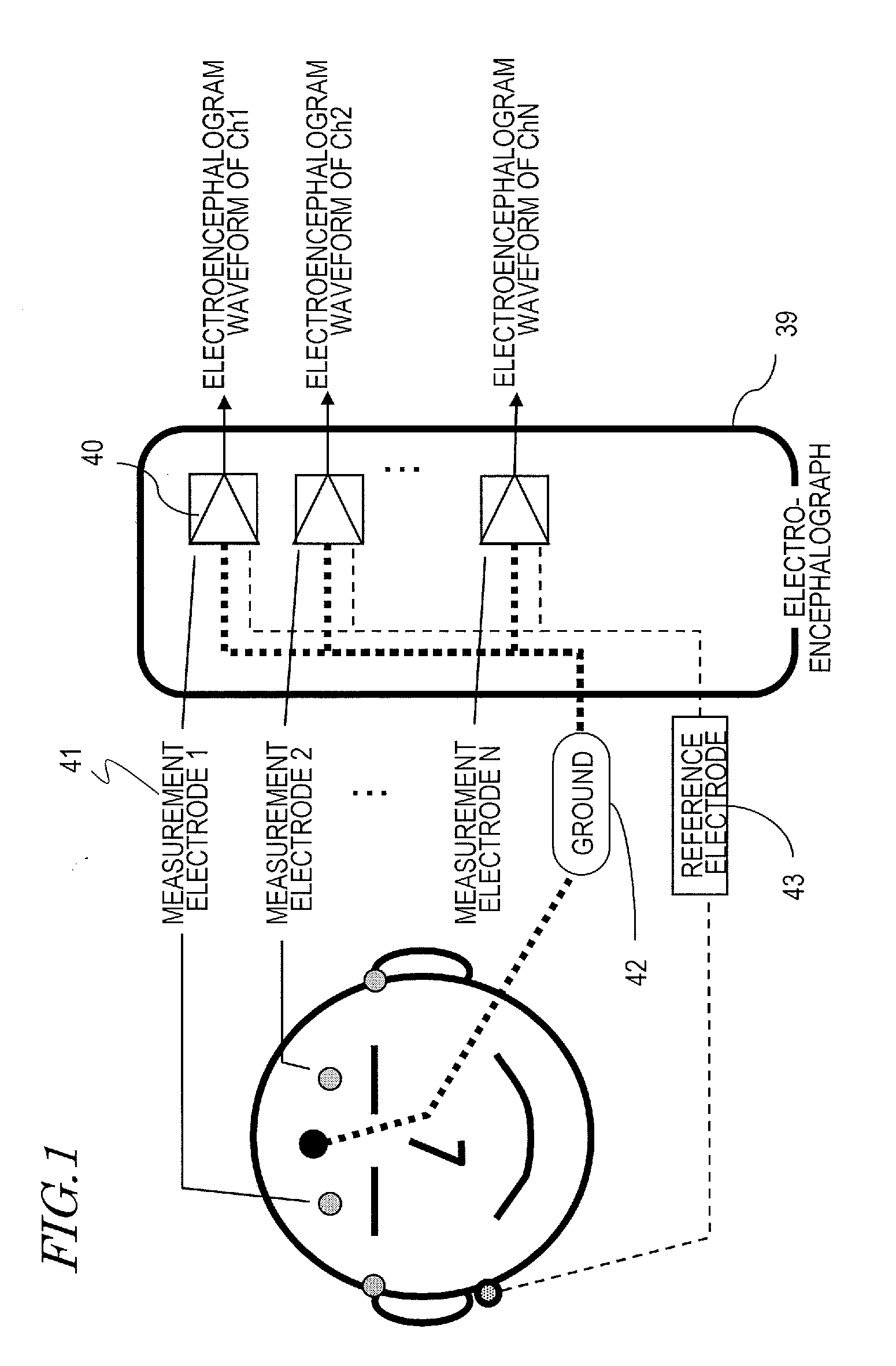Electrode attachment state determination system, electrode attachment state determination method, and program thereof
a technology of electrode attachment and state determination, applied in the field of electroencephalogram measurement, can solve the problems of user burden, wear stability, and the act of applying paste on the electrode also presents a burden on the user, and achieve the effect of stable electroencephalogram measuremen
- Summary
- Abstract
- Description
- Claims
- Application Information
AI Technical Summary
Benefits of technology
Problems solved by technology
Method used
Image
Examples
embodiment 1
[0107]FIG. 7 shows the functional block construction of an electrode attachment state determination system 20 according to the present embodiment. FIG. 8 shows an exemplary shape of a device which embodies the electrode attachment state determination system 20 in the form of an HMD. FIG. 9 shows an exemplary hardware construction of the electrode attachment state determination system 20. Among the constituent elements shown in each figure, like constituent elements are denoted by like reference numerals.
[0108]In the present specification, the electrode attachment state determination system 20 will be described on the basis of an HMD shape shown in FIG. 8. The respective portions of the HMD are expressed by using terms that indicate eyeglass portions. FIG. 10 shows the names of respective portions of eyeglasses. Portions which hang on the ears of a user 10 to fix the HMD main body will be referred to as “endpiece portions”. Portions which come in contact with the nose of the user 10 ...
embodiment 2
[0206]With the construction of Embodiment 1, when the state of attachment of an electrode becomes insufficient, the user 10 is able to know the type of electrode which is insufficiently worn, thus realizing a determination of the state of electrode attachment.
[0207]However, in a daily-life environment, it is expected that there are frequent chances for electrodes to become insufficient under the influence of the motions of the user 10, etc. Therefore, every time the user 10 undergoes a motion, a notice of an insufficient electrode is given by the construction of Embodiment 1, thus making it necessary for the user 10 to correct the electrode state.
[0208]Thus, what is needed is a function of, after detecting an insufficient wearing of an electrode, automatically restoring from the electrode insufficiency state to enable continued electroencephalogram measurement. The automatic restoration from an electrode insufficiency state is made by replacing an electrode which has become insuffic...
PUM
 Login to View More
Login to View More Abstract
Description
Claims
Application Information
 Login to View More
Login to View More - R&D
- Intellectual Property
- Life Sciences
- Materials
- Tech Scout
- Unparalleled Data Quality
- Higher Quality Content
- 60% Fewer Hallucinations
Browse by: Latest US Patents, China's latest patents, Technical Efficacy Thesaurus, Application Domain, Technology Topic, Popular Technical Reports.
© 2025 PatSnap. All rights reserved.Legal|Privacy policy|Modern Slavery Act Transparency Statement|Sitemap|About US| Contact US: help@patsnap.com



